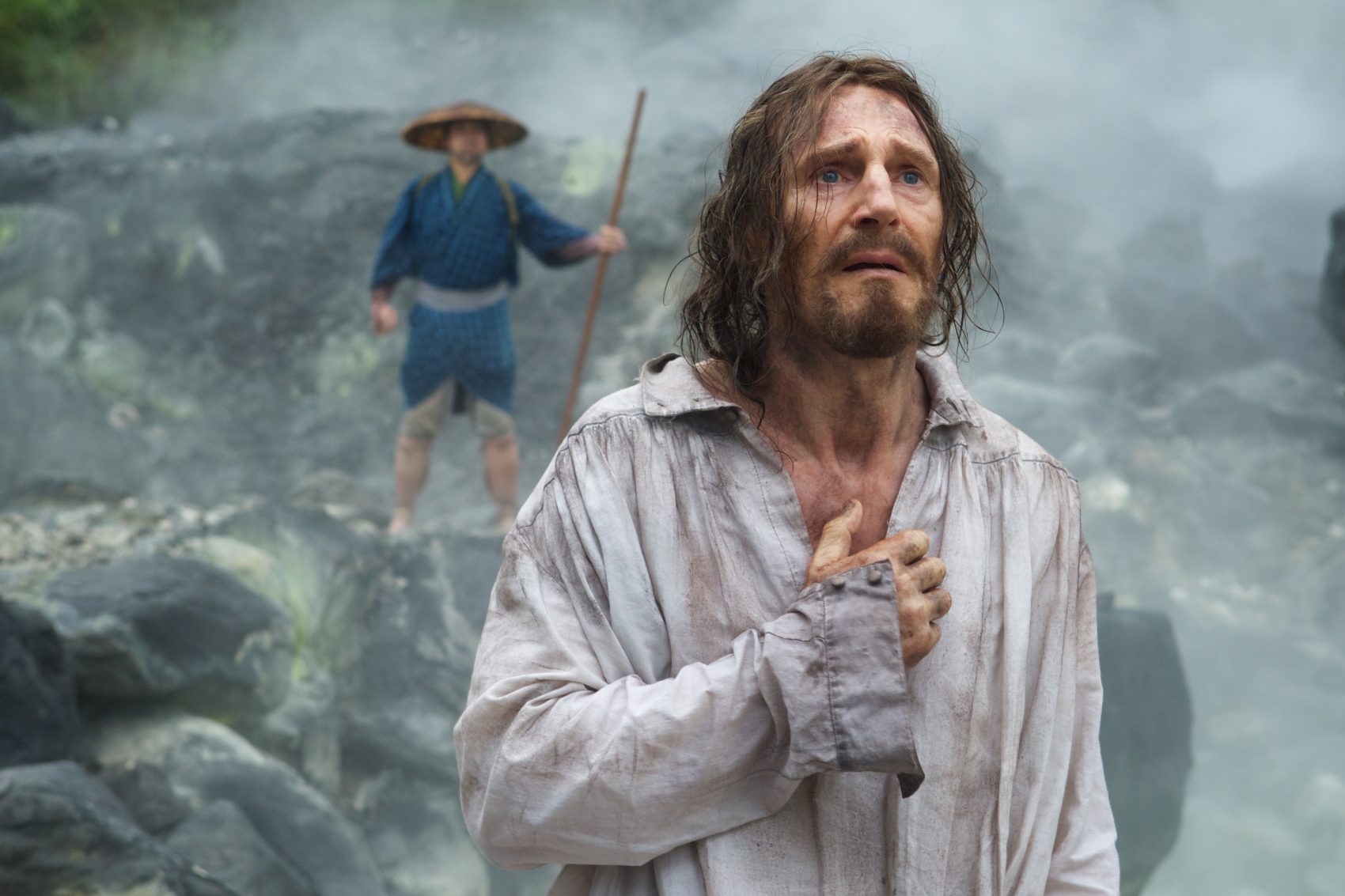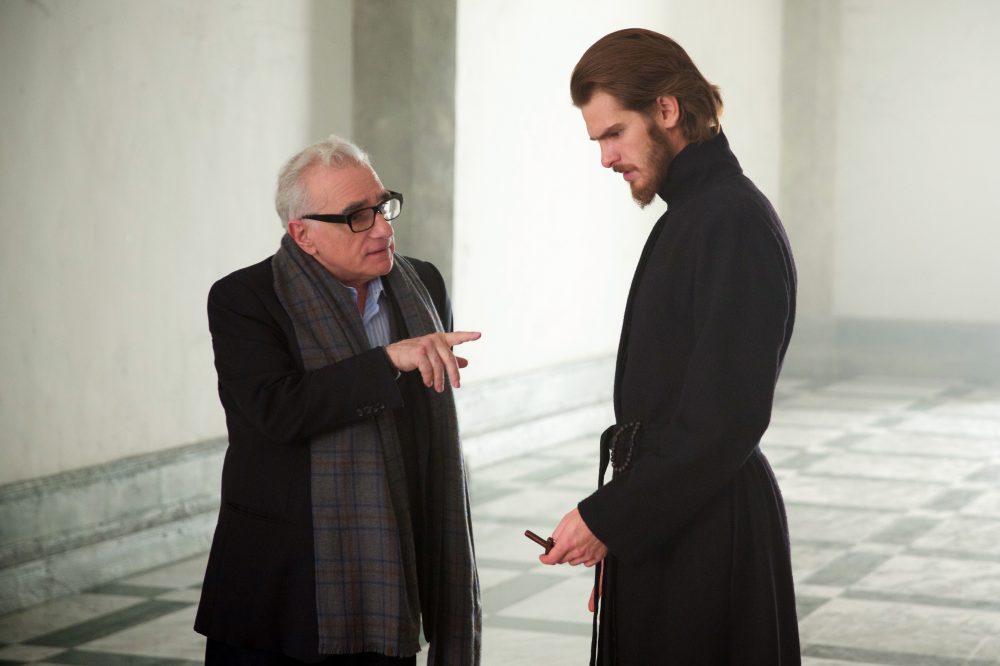Advertisement
In 'Silence,' Scorsese Ditches Bravado For A Candid Film About Grappling With One's Humanity

To watch Martin Scorsese’s "Silence" is to travel back in time, not just to 17th century Japan where the film takes place, but also to a bygone era in cinema culture.
Stubbornly unlike anything you’ll find at multiplexes or even arthouses today, this severe and intensely challenging picture owes more to Ingmar Bergman’s haunted spiritual crises or Robert Bresson’s austere allegories than any contemporary models. With its blunt depictions of torture and even blunter questions of faith, “Silence” could very well be the most unfashionable movie ever made. The fact that it exists at all is astonishing, the fact that it’s a big-budget release from a major studio is a miracle.
And it’s impossible to imagine such a miracle being pulled off by anyone besides cinema’s high priest himself, Martin Scorsese, who has been struggling to make a movie out of Shusaku Endo’s 1966 novel for the better part of three decades now. Fresh from his own personal via dolorosa after “The Last Temptation of Christ’s” reception degenerated into a fundamentalist free-for-all — a beautiful movie detested by millions who never bothered to watch it — the depressed director reportedly discovered Endo’s book back in 1989, while visiting Japan to shoot his cameo appearance as Vincent van Gogh in Akira Kurosawa’s "Dreams" (I know, such typecasting).
Scripted by Scorsese with his “Age of Innocence” and “Gangs of New York” writing partner Jay Cocks, “Silence” was nearly filmed in 2009 with Daniel Day-Lewis, Benicio del Toro and Gael García Bernal but the project fell apart, presumably due to the complete nonexistence of box office appeal. It’s fair to assume that “Silence” only finally got made thanks to the director’s astonishing $392 million worldwide blockbuster success with “The Wolf of Wall Street,” and the idea that such a splenetic marathon of depravity could end up enabling this devout exploration of virtue is an irony indeed worthy of a Scorsese picture.

But then that’s always been the way with “Marty movies,” torn as they are between the sacred and the profane, with his doomed protagonists negotiating ancient tribal rites, aching for transcendence while enthralled by iniquity. “You don't make up for your sins in church. You do it in the streets. You do it at home. The rest is bulls--- and you know it,” hissed the director himself in the opening narration of his 1973 breakthrough “Mean Streets.” "Silence" feels like a stark distillation of the themes Scorsese has been wrestling with on movie screens for over 40 years.
Andrew Garfield and Adam Driver star as headstrong Jesuit missionaries from Portugal circa 1633, journeying to the Land of the Rising Sun after hearing rumors that their mentor (Liam Neeson) renounced his faith and “is living as a Japanese.” This is no mission for the faint of heart. The Tokugawa shogunate outlawed Christianity and so the peasants worship in secret, subject to appalling tortures and execution if caught by authorities carrying so much as a tiny wooden cross on their persons.
Advertisement
The adoration of such totems — "this religion of things" — at first troubles Garfield’s Father Rodrigues, who narrates the film via letters home that start out clouded thick with condescension. He refers to the locals as “wretches,” but reserves the lion’s share of his disdain for their drunken guide Kichijiro — a comedic shambles played in fine, Toshiro Mifune-style by Yōsuke Kubozuka. Like most of Rodrigues’ assessments, these are all incredibly short-sighted and he’s going to wind up paying dearly for them before the movie’s done.
Lenny Bruce had a great routine about how missionaries couldn’t help but wind up kinda believing that they’re God, and it’s not for nothing that Scorsese has outfitted the preening Garfield with a gorgeously flowing mane straight out of a Cecil B. DeMille Biblical epic. Rodrigues hilariously sees a painting of Jesus staring back from his reflection in a puddle of water, and if “The Last Temptation of Christ” was about a holy man struggling to accept that he's God, “Silence” is about a holy man struggling to accept that he’s just a man, and a fallen one at that. (In other words, this is a Martin Scorsese picture.)

Rodrigues gets broken down by the best, though. The second half of “Silence” is a series of harrowing, dialectic conversations with a deliciously slithering head inquisitor (Issey Ogata) and his translator (Tadanobu Asano from “Ichi the Killer”) whose very smile feels like an act of violence. What is this arrogance that inspires white men to journey to lands unknown and inflict their beliefs on poor people whose language they can’t even be bothered to learn? A deeply religious film with no interest in winning converts nor preaching to the converted, “Silence” just asks us to sit with some troubling history, provoking and prodding until we arrive at our own conclusions.
Beautifully shot by the great cinematographer Rodrigo Prieto, this one doesn’t look like other Scorsese movies. Boasting none of the swaggering, rock 'n' roll acrobatics that have become this filmmaker’s trademark, the camera keeps a respectful distance in impeccably blocked, unnervingly still, locked-off shots. There’s not even any music, as the “score” credited to Kim Allen and Kathryn Kluge is mostly syncopated nature sounds of cicadas and such. There’s nothing here from Marty’s usual bag of tricks, all his gimmicks and bravado pared away. “Silence” feels naked and uncomfortably forthright.
Form meets content in the film’s final reels, which depart from Rodrigues’ perspective and find the former Father stripped of all the church’s titles and accoutrements — humbled and debased, at long last one with his fallen flock. It is only in these moments — as an equal alongside that “miserable wretch” Kichijiro — that Rodrigues is finally able to locate within himself a pure compassion that can truly be called Christ-like. It is here, in the absence of ceremony and ornamentation that he discovers God’s grace. Or as someone else once said, "the rest is bulls--- and you know it."
"Silence" is now playing at AMC Boston Common, Kendall Square and West Newton. It will expand to more theaters Friday, Jan. 13.
